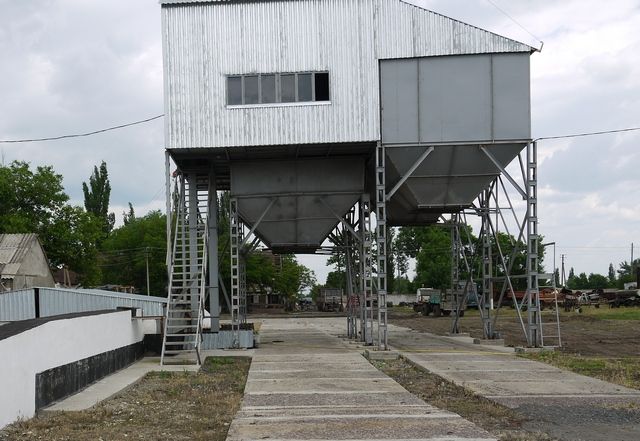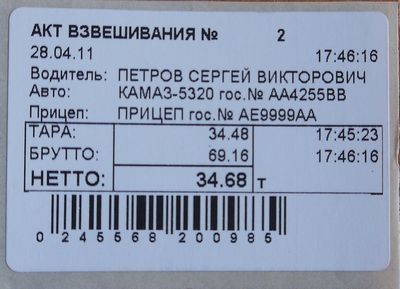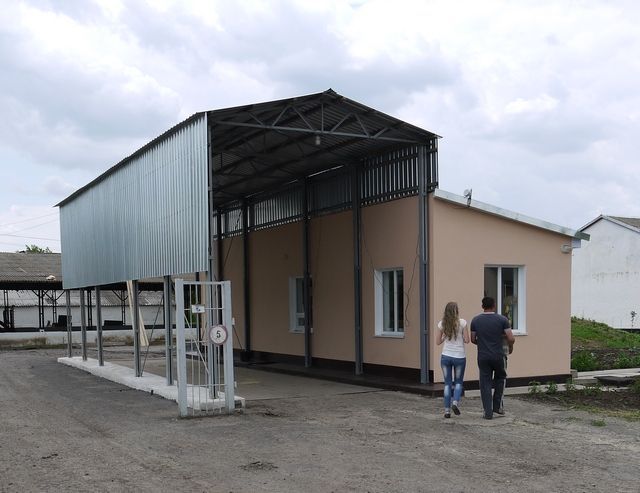Grain Intake Accounting
To quickly organize grain intake accounting, you should first determine what needs to be tracked and which production processes should be controlled. The most critical accounting point is the truck scale — this is where the main workload for accounting and document flow will be concentrated. The weigh station operator will handle documents from the fields as well as internal transfers of products between lanes, the grain cleaning complex (ZAV), and storage warehouses.
To implement automated accounting at intake, it is necessary to analyze current business processes and develop an integration plan between the existing "paper-based accounting" and software. Unfortunately, direct copying (transferring an accounting scheme from another enterprise) often yields poor results. In our experience, the attempt to replicate generic solutions is the main cause of failure when automating accounting processes. Automation implementation begins with the truck scale and can then be gradually expanded. The accounting chain may include the harvester operator’s ticket, the driver's route sheet, and internal transfer orders.
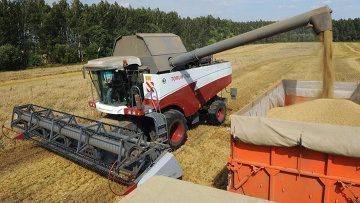
The automation system at intake will significantly increase the speed of data entry and provide comprehensive information for complete and multidimensional control over labor and production resources, enabling you to make more efficient management decisions in the shortest possible time. In addition, the automation system will minimize the impact of the human factor at intake points. Thanks to operational accounting using 1C software, you will be able to control the entire process — from the checkpoint to the grain storage facility.
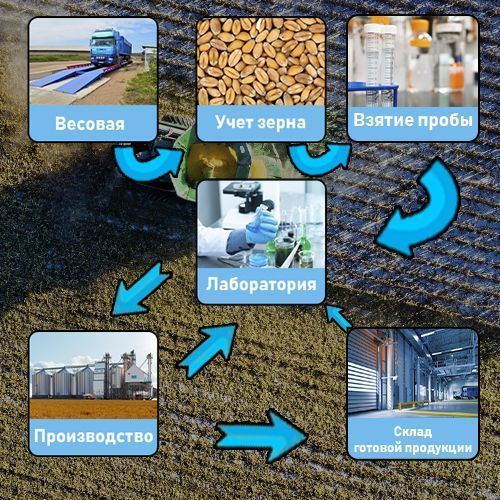
In most cases, the accounting software can be connected to almost any electronic truck scale. If mechanical scales are used, we do not recommend upgrading them with a "single sensor" — instead, opt for full modernization kits with 4, 6, or 8 sensors. You can find a suitable model in our catalog — truck scales. The combination of "truck scales + accounting software" eliminates manual data entry, reducing the risk of errors or deliberate data manipulation.
We recommend starting the automation process by implementing barcode-based data entry and event triggering. Options using RFID cards or RFID tags are available, but they lack visibility. Radio frequency technologies should be used only when the accounting system is fully debugged — as our specialists say, "enable shadow control." The main accounting process is based on barcodes and paper documents (primary records), while additional vehicle and driver card control is managed using RFID technology.
Barcode labeling of documents significantly speeds up accounting operations, reduces manual entry errors, and allows you to monitor the document flow and processing time. Many routine operations are eliminated, employee workflows are simplified, and management receives real-time information on the operational status at the intake point.
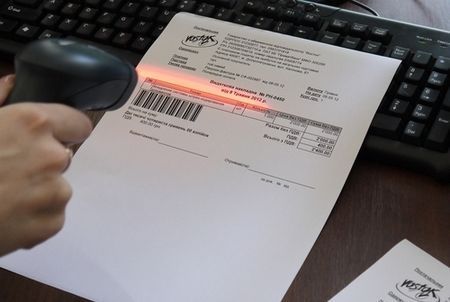
What are the advantages of automated grain intake accounting?
First, it helps prevent loss of finished product. Second, it enables automatic documentation from the source, saving time on form completion. But that's not all!
Based on our experience — both from implementing automation "from scratch" and from correcting "unfinished systems" created by other vendors — we assert that automated grain intake accounting should be implemented gradually. First, the 1C accounting system should be installed and connected to the truck scales. The benefits are immediate: manual input of weighing results is eliminated. Next, label (or receipt) printers should be installed for printing tickets, weighing acts, route sheets, and transfer tasks. Once the primary documentation workflow is debugged, warehouse operators and inventory controllers can be integrated into the system. At the next stage, harvester operator tickets and central office orders can be added. In addition to accounting automation, we recommend implementing video surveillance at control points: the checkpoint, truck scales, lane overviews, ZAV bunkers, and warehouse gates.
License plate recognition does not provide significant value for accounting and control at grain intake. It is more of a trendy feature. If budget allows, it can be implemented as an additional control measure.

One of the more complex tasks in accounting is address-based control of grain unloading into temporary piles, and later the loading and transfer to the ZAV or storage warehouses. There is no universal method for monitoring grain placement in lanes and piles. Each enterprise requires an individual solution — these may include guiding cards, handheld data terminals for drivers, network barcode scanners, or RFID systems. The optimal approach is determined during business analysis and implementation.
Once the automation system at intake is complete, control becomes significantly easier: video surveillance cameras can be accessed remotely via the Internet. Clear, precise reports will ensure high responsiveness and unique data reliability in real time, thanks to full system automation. Each day, the intake automation system will generate a summary document of harvested grain and prepare shift-based reports.
The choice is yours: continue accounting the old-fashioned way or give your company a real competitive advantage in today’s market.













